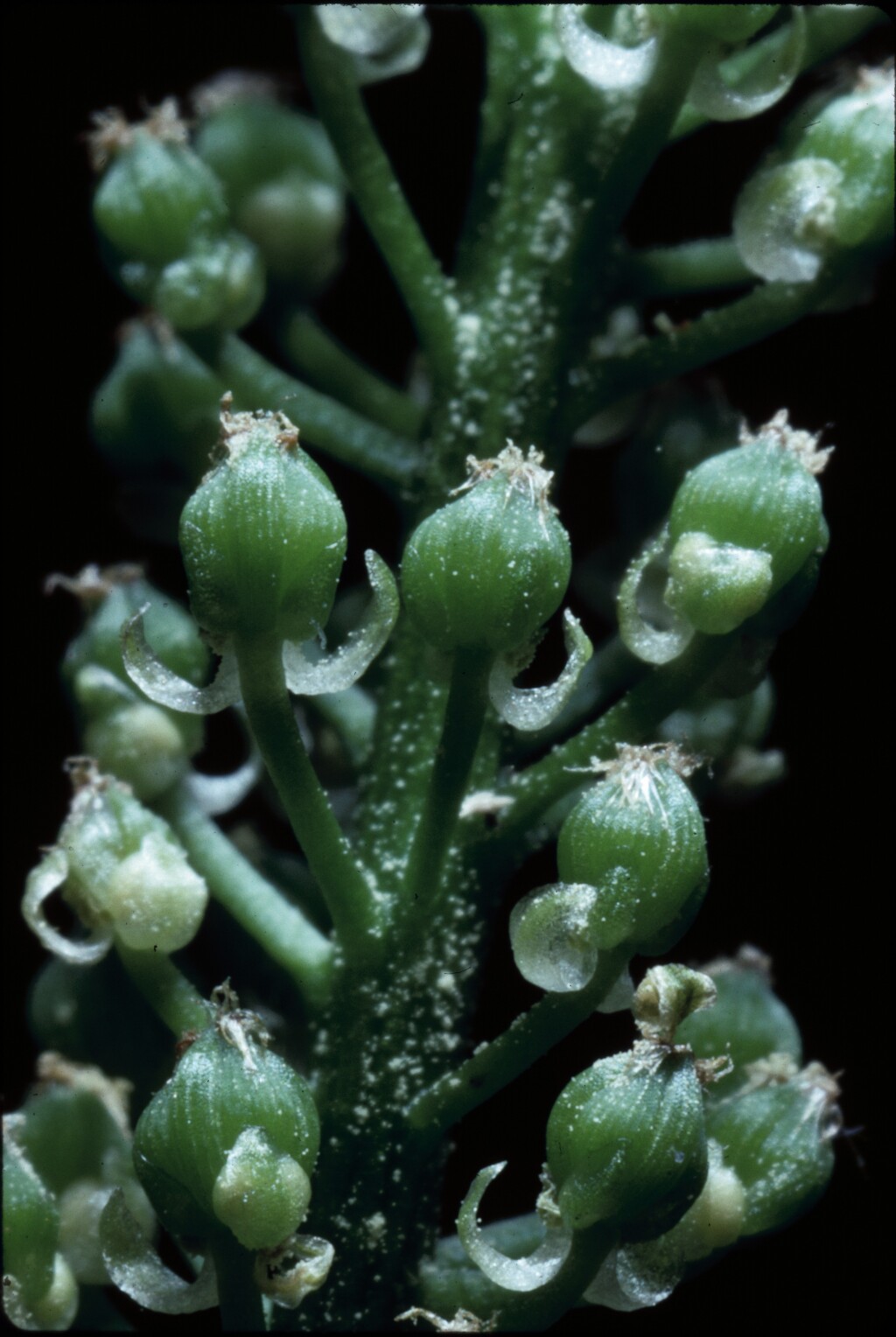Triglochin striata
Ruiz & Pav.Slender perennial herb, (3–)12–37(–50) cm high. Rhizome soft, glabrous. Tubers absent. Leaves forming tufts spaced along the rhizome, either terete or flat and strap-like, (2–)8–30(–52) cm long, from longer than to shorter than the infructescence; apex of basal sheath with an obvious obtuse ligule 1–5(–7) mm long. Scape at fruiting erect, (1–)3.5–15(–29) cm long; infructescence (0.6–)3–18(–30) cm long, with (4–)20–c. 200 fruits. Fruits subglobular to ovoid, 1.5–3 mm long, 1.5–2.4 mm wide, with pedicel (1–)1.5–3 mm long; carpels 6, 3 fertile carpels alternating with 3 undeveloped sterile ones; fertile carpels strongly keeled to 3-ridged dorsally when dry, lacking projections except apex slightly pointed; sterile carpels remaining attached to the pedicel when fertile carpels have fallen. Fruits Sep.–May(–Jul.).
MuM, Wim, GleP, Brid, VVP, VRiv, MuF, GipP, OtP, WaP, Gold, CVU, GGr, DunT, NIS, EGL, EGU, WPro, HSF, HNF, OtR, Strz, VAlp. Also WA, SA, Qld, NSW, Tas. Commonly occurs in wet open places; terete-leaved plants frequently comprise part of the herbfield of saltmarshes.
The keel and ridges of the fertile carpels are usually much darker than the remaining dorsal tissue, such that the carpels appear streaked. The plants with flat strap-like leaves here included under Triglochin striata probably constitute a distinct species. Large vegetative specimens of these may be confused with small individuals of several tuberous-rooted, aquatic Cycnogeton species. However, T. striata s. lat. is distinguished from the latter by the presence of a ligule, the lack of tubers and the non-woody glabrous rhizome.
 Spinning
Spinning




